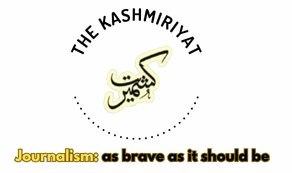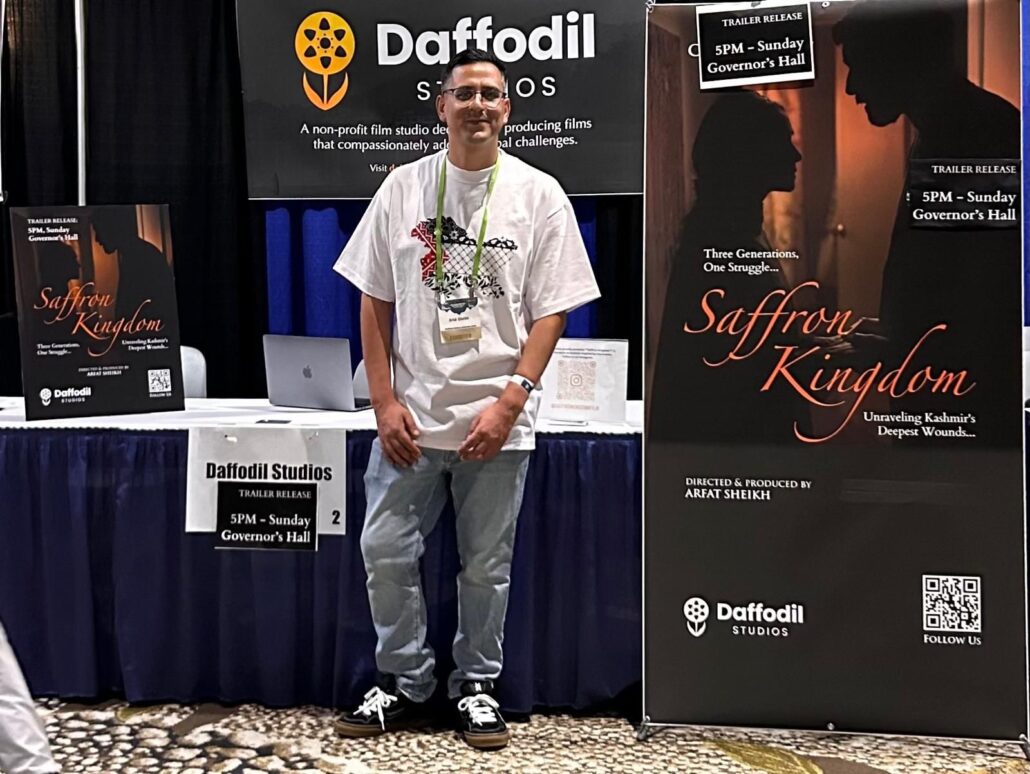
Anusha Imtiyaz
Migration from one’s native land to another has been a recurring phenomenon throughout human history. Migration from Kashmir is no exception. Whether for trade, the dissemination of intellectual prowess, or harnessing their crafts and skills, Kashmiris have long been adept at traveling and adapting to new cultures while simultaneously holding on to their heritage.
The Kashmiri diaspora consists of people who migrated for various reasons and are now settled abroad. This diaspora has witnessed significant growth, with economic and political instability in the region being some of the primary causes.
Saffron Kingdom is a Kashmiri-American film that explores the impact of conflict on a family living in Kashmir before their migration. It follows their journey—questioning their place amid political turmoil, fleeing from Srinagar in the 1990s, and navigating their identity as Kashmiris living in Atlanta, U.S., in 2019.
Private screenings of Saffron Kingdom have begun in various U.S. cities, and the film is set to be released online on a streaming platform by August this year.
Arfat Sheikh, a filmmaker from Kashmir and the director of Saffron Kingdom, has previously worked on short films, including Blurred Hopes, which highlighted the impact of enforced disappearances on women who lost their families in Kashmir.
In an interview, Arfat spoke about the making of the film, detailing the process from ideation to its realization.
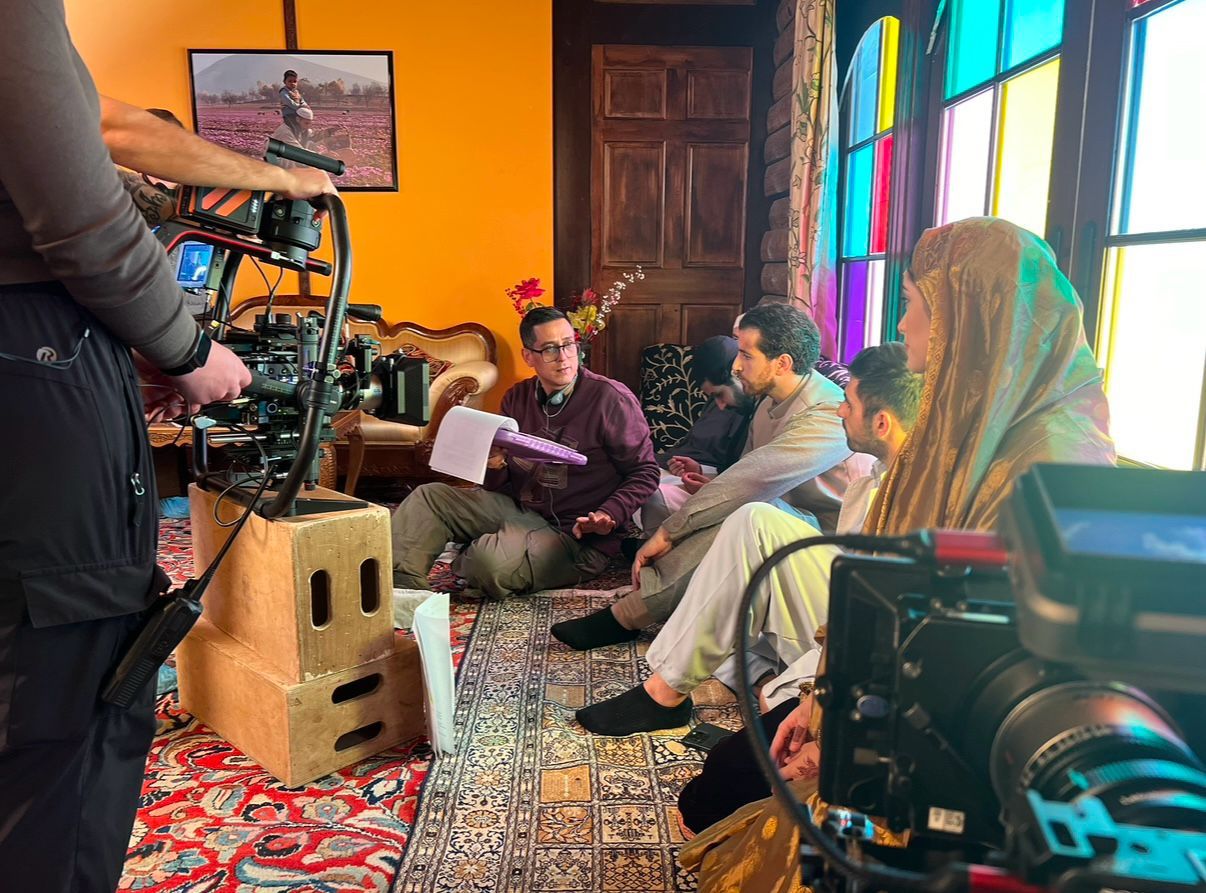
A Little Background
I was born and raised in Srinagar, where my father was a musician and producer, and my mother was a homemaker. While still a student, I began working part-time as a compere for Western music shows at Radio Kashmir Srinagar.
In 2004, I moved to Delhi and eventually to the U.K. for further studies. I hold a Bachelor of Arts from Kashmir, a Master of Arts in PR and Communications from Leeds, U.K., and an MFA in Film Production from Georgia, U.S.
What Led You to Filmmaking?
I’ve always been fascinated by filmmaking and its power as a medium, but I never actively pursued it at first. After exploring various fields, I accepted a role at an international NGO working in Kashmir, where they were doing groundbreaking work. That’s when I was assigned to create project documentaries and videos, which led me to explore filmmaking more deeply.
What Sparked This Film?
It was the glaring absence of authentic Kashmiri voices in cinema and the way Kashmiri narratives have been consistently controlled and distorted by Indian cinema. The stories that do emerge are often told from an outsider’s perspective, stripping them of nuance and lived experience.
I wanted to challenge that by creating something rooted in the realities, emotions, and complexities of Kashmir—told by someone who intimately understands its history, culture, and struggles.
How Long Did This Project Take, and How Demanding Was It?
The entire project took about two years from conception to completion, including writing, shooting, and post-production.
Before filming, we spent around 1.5 years on research and scriptwriting. Pre-production lasted about six to eight weeks, followed by principal photography—20 days in the U.S. and five days in Srinagar for exterior shots.
Post-production took another six months. Every stage required extensive planning, coordination, and creative effort.
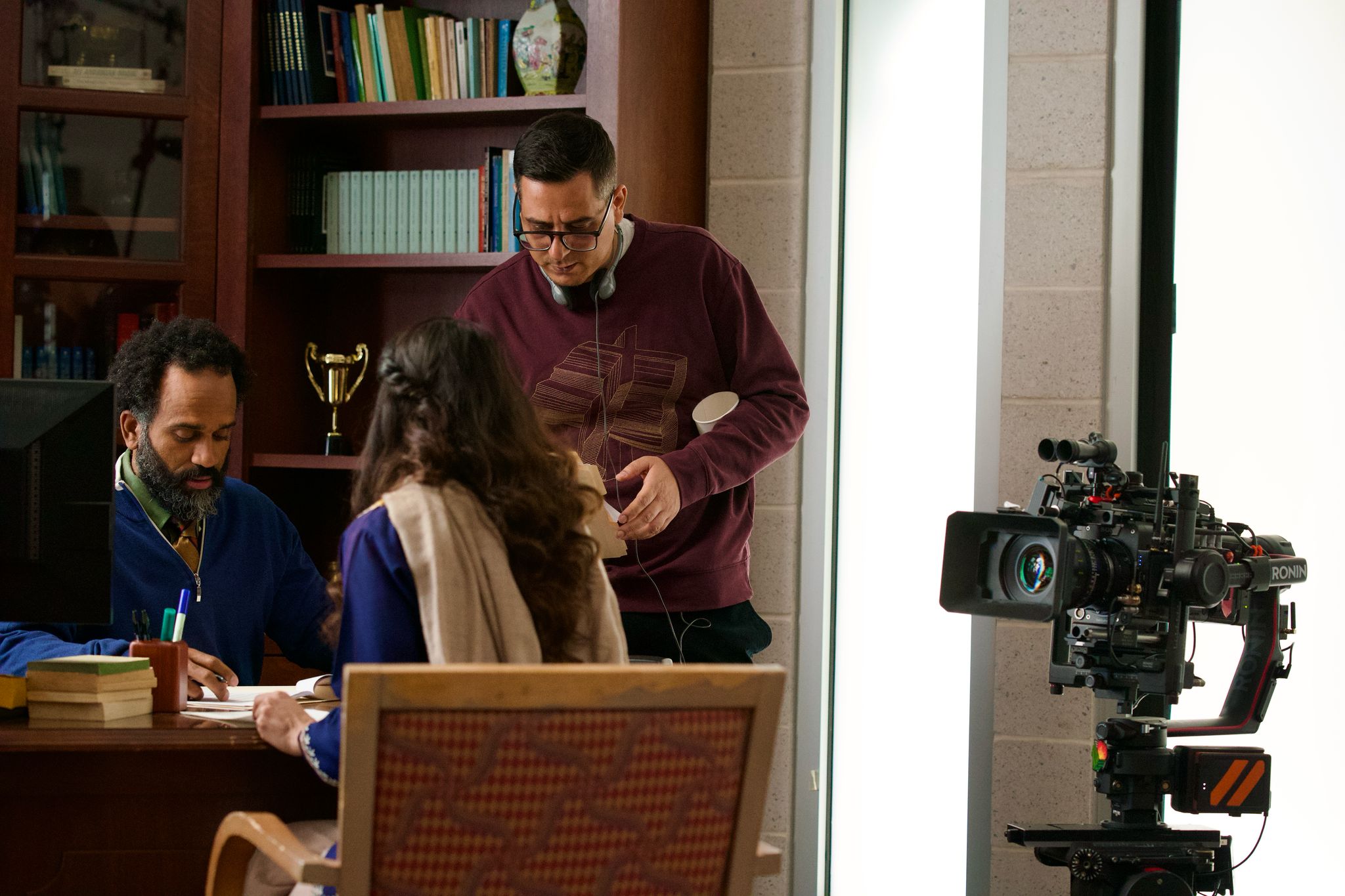
Did You Face Any Challenges from the State?
The fact that I had to shoot the film in the U.S. and secretly obtain footage from Kashmir speaks volumes about the challenges I had to navigate to avoid state interference.
Art, especially in Kashmir, is often persecuted because it has the power to reveal deep wounds. The absence of a Kashmiri film industry is a direct result of this suppression. Anyone attempting to tell the truth faces serious risks.
That’s why I chose to make this film in the U.S., where I could freely complete the project and ensure its distribution without the fear of state censorship.
What Kind of Reaction Do You Anticipate From the State or Opposing Narratives? How Do You Plan to Tackle Them?
The backlash has already begun—I’ve received numerous messages on social media, forcing me to change the privacy settings of most of my accounts. But I started this journey to tell an authentic Kashmiri narrative, and I will face any challenges head-on.
I refuse to lie about how the Indian mainstream cinema distorts our reality.
This film is our story, told truthfully. I fully expect strong opposition, but the fact that it was made in the U.S. allows me to distribute it freely worldwide and submit it to film festivals without the same level of censorship that Kashmir-based films face.
Bollywood has long fabricated narratives about us—not only pushing a false image of normalcy but also vilifying Kashmiris as terrorists and distorting our struggles.
The truth cannot be ignored, and I’m determined to share it, no matter the pushback.

What Was the Significance of the Locations You Chose?
I chose to shoot the film in Atlanta, Georgia, because of its strong diasporic connection and the fact that the family in the story is based there. Personally, it also held significance—I first arrived in the U.S. in Georgia, so it felt natural to set the film there.
Additionally, Atlanta has become a major filmmaking hub, often considered the next big production center after Los Angeles. Many high-budget productions have moved there due to its film-friendly infrastructure, tax incentives, and access to top-tier resources.
Beyond practicality, I was drawn to Atlanta because I knew the landscape well, and it’s a welcoming city for immigrants. Some locations were carefully chosen to resemble Kashmir, particularly when depicting the 1990s—especially the trees, which played a crucial role in recreating the atmosphere of that time.
How Did You Find the Right Cast for the Film?
I had an incredible casting director, Brian Beegle, who understood the challenges we would face in casting.
Finding Kashmiri actors was difficult—first, because there aren’t many in the diaspora, and second, because bringing actors directly from Kashmir would be a logistical challenge and could put them or their families at risk.
Given these constraints, we expanded our search to other communities while ensuring the authenticity and emotional depth of the performances.
We opened auditions to actors from Latino, Arab, and South Asian backgrounds, prioritizing their ability to convey the depth the story required. Casting for roles set in Kashmir was particularly tricky since the actors had to speak Kashmiri, but we found exceptionally talented performers who rose to the challenge.
Our lead, Diana Aras, who plays Masrat, is of Aramean heritage. Alex, who plays Rizwan, is multiracial. Ahmed Ghafouri and Mohammad Fahmy, who portray young and older Chachu, are Middle Eastern. Marisol Ray and Laura Lopez, who play young and older Pophai, are Latinas.
What initially seemed like a challenge turned into an incredible opportunity—diverse communities came together to tell our story, making the film about more than just Kashmir.
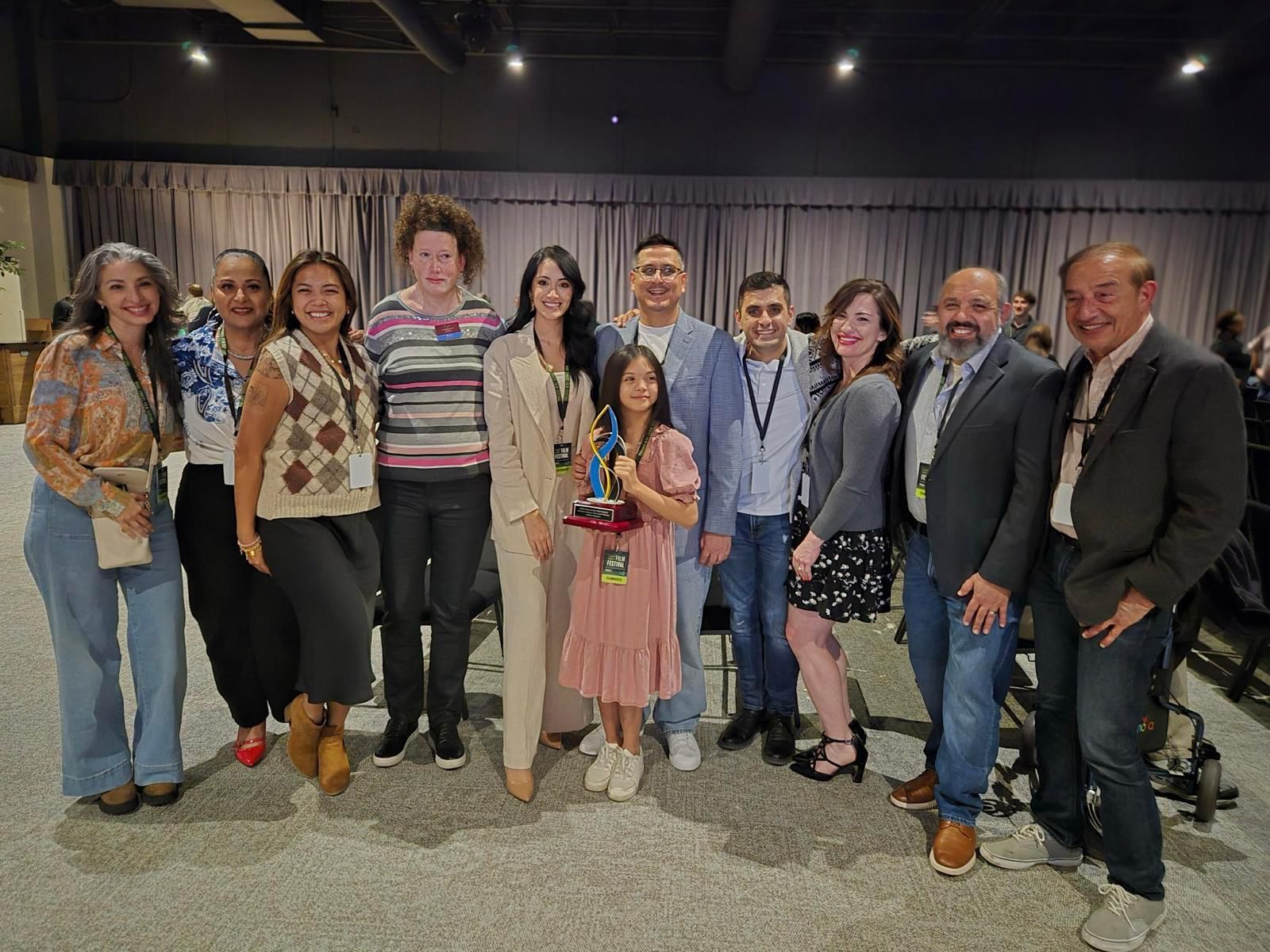
How Did You Explore Themes of Exile, Memory, and Belonging?
The film intricately weaves together these themes, portraying both personal and collective experiences.
At its core, it tells the story of a family in self-imposed exile, highlighting the dangers of speaking out and the deep sense of displacement that follows.
A persistent longing for a lost homeland runs throughout the film, not as mere nostalgia but as a form of resistance and survival. In an era where history is systematically erased, remembering becomes an act of defiance.
What Do You Want the Audience to Experience?
I want the audience to confront the raw and unfiltered reality of Kashmir. This film directly challenges the dehumanizing narratives pushed by Indian media, offering an authentic portrayal that demands recognition of our humanity.
Cinema wields immense power to awaken consciousness. This is our story, our truth—it must be heard.
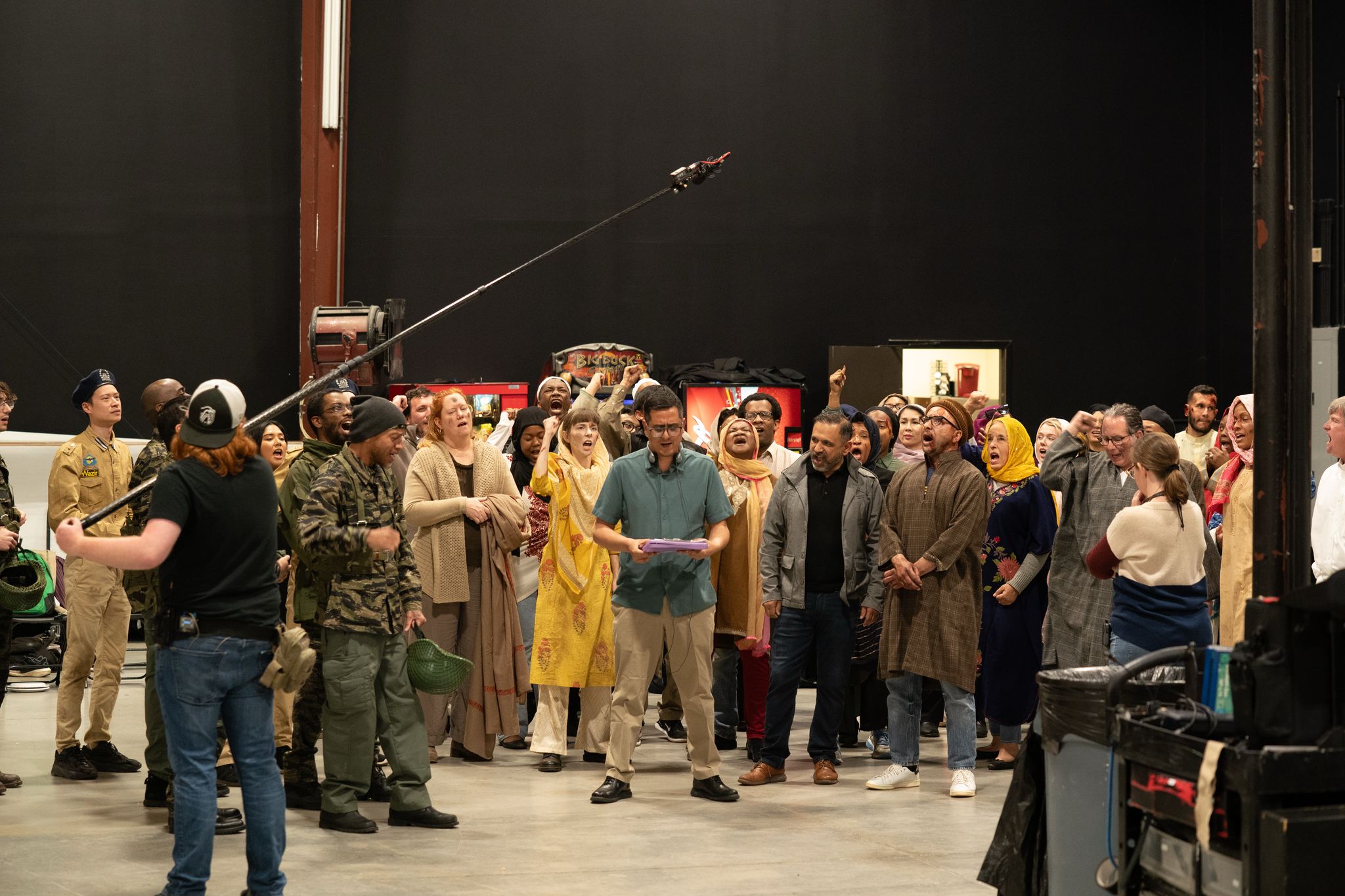
What’s Next?
We are in the final stages of producing a short documentary for film festivals. We are also raising funds for our next feature film.
Beyond our own projects, we aim to support other Kashmiri filmmakers by creating platforms for them to tell their stories authentically.
How Can People Watch the Film?
Screenings have begun in U.S. cities, and we are engaging with distributors for a broader release.
Our goal is to make the film available on streaming platforms while navigating potential censorship challenges, particularly in Kashmir.
We encourage audiences to stay connected through our official channels for updates. Your support is crucial in sharing this story with the world.
